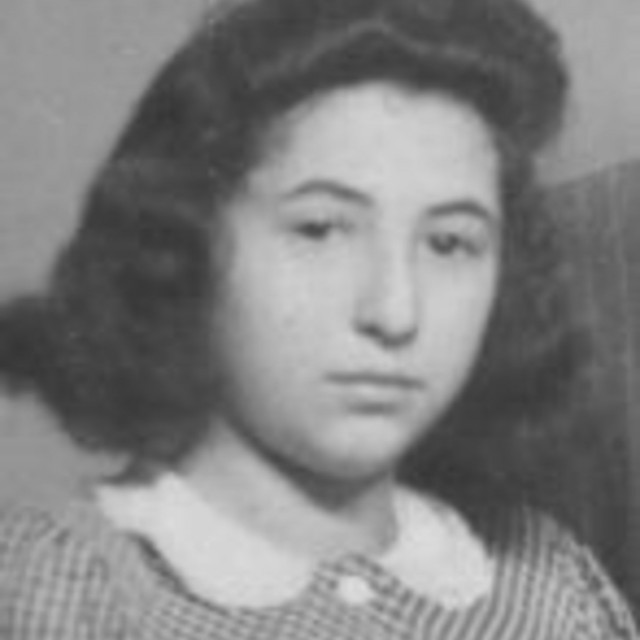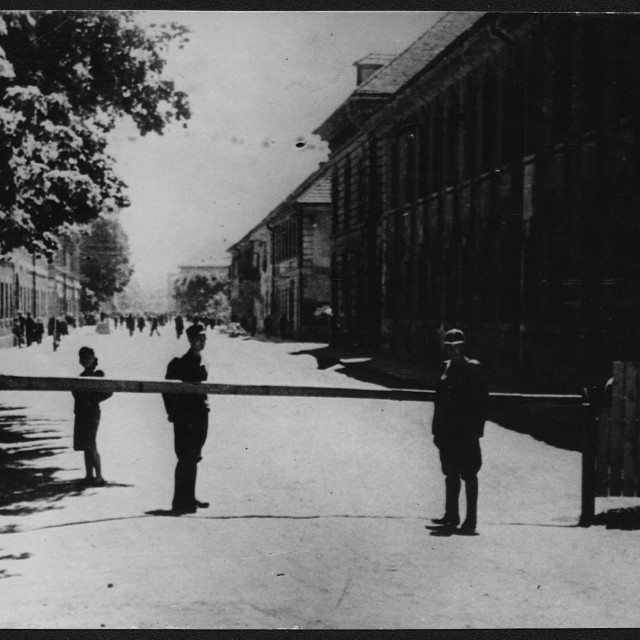Bis heute rieche ich die stinkende, vergammelte Hirse
Wenn Marta Kottová Heute retrospektiv die Zustände in den Lagern vergleicht, die sie während des Zweiten Weltkrieges durchging, liegt Theresienstadt weit vorne: „Wenn mich die Kinder in den Schulen Heute fragen ob wir hungrig waren oder was zu essen hatten, sage ich immer: ‚Wo’? Denn es macht einen riesigen Unterschied. In Theresienstadt bekamen wir Häftlinge drei viertel Brot für drei Tage. Es gibt sogar ein Lied darüber: ‚Drei viertel Brot kriegst du für drei Tage, das reicht so für einen, vielleicht auch für zwei Tage’. Dass macht ein viertel Kilo Brot pro Tag. Dazu bekamen wir noch jeden Tag das Mittagessen. Zwar waren es nur faule Kartoffeln, ungeschält, aber was auch immer es war, es war stets Essen. Es gab zwei oder drei Kartoffeln zum Essen. Dazu ein wenig Suppe, so einen verdickten Brei. Nun, wenn ich Heute meine Enkelin höre wie sie Hirse kocht dann rieche ich sofort die stinkende, vergammelte Hirse, aus der sie uns die Suppe kochten. Meine Mutti sagte immer, dass Hirse duftet. Ich kann es mir nicht vorstellen. Aber es gab wenigstens was zu essen. Und am Abend gab’s dann das Brot jeden Tag. Und manchmal waren auch Päckchen erlaubt. Wenn jemand ein Paket bekam teilte er es natürlich immer mit den Menschen die mit ihm den Raum teilten. So war es ums Essen in Theresienstadt.“ Die größten Unterschiede gab es angeblich zwischen Theresienstadt und Auschwitz. „In Auschwitz habe ich kein Stückchen Brot gesehen, nie. Und in Mährensdorf, meinem letzten Lager, wo ich 14 Stunden am Tag sehr, sehr harte Arbeit in der Fabrik verrichtete, gab es siebzig Gramm Brot pro Tag. Theresienstadt nannte man nicht umsonst ‚Kurbad Theresienstadt’. Verglichen mit den anderen Lagern war es wirklich ein Kurort.“ Zur Aussage von Frau Kottová sollte hinzugefügt werden, dass die Kinder in Theresienstadt eine bessere Behandlung genossen als der Rest der Häftlinge. Tausende von alten und kranken Menschen starben den Hungertod hier.
Hodnocení
Hodnotilo 0 lidí
Routes
Not a part of any route.
Comments
No comments yet.









